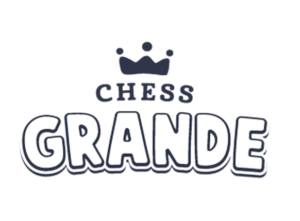In the realm of intellectual challenges, chess has long been regarded as a mental crucible, a domain reserved for those possessing the upper echelons of cognitive prowess. However, through our extensive experience in teaching chess, a realization has dawned upon us. While chess is undeniably fascinating in its own right, the majority of enthusiasts are drawn not just to the game itself but rather to its ancillary benefits. These extend beyond the traditional notions of strategic thinking, focusing abilities, and mental endurance.
As we navigate through years of instructing chess, a prevailing trend emerges—many are drawn to the game, not merely as an isolated pursuit but as a tool with tangible secondary advantages. Parents, in particular, often introduce their children to chess with the aim of enhancing academic performance. This prompts us to pose a fundamental question: Can chess be more than a recreational activity and directly contribute to academic goals?
This pondering led to the inception of our Academic Integration Program at Chess Grande. Motivated by a synthesis of diverse research findings showcasing the positive impact of chess on mathematical and linguistic skills, (The Effects of Chess on Reading Scores: District Nine Chess Program Second Year Report” by Stuart Margulies) we sought to establish a direct connection between the game and academic excellence.
So, how does chess serve as a conduit for elevating academic prowess?
This is the core inquiry that propels our exploration and the foundation upon which Chess Grande has developed an innovative approach to seamlessly integrate chess into the academic landscape.
1. The Chessboard as a Mathematical Canvas
The chessboard, with its 64 squares organized in an 8×8 grid, becomes a captivating playground for mathematical exploration. Students at Chess Grande learn to appreciate the intricacies of this grid as they maneuver pieces across its expanse. The grid becomes a tangible representation of mathematical structures, fostering an understanding of arrays, matrices, and the Cartesian coordinate system.
2. Coordinate Mastery:
Chess inherently introduces students to the Cartesian coordinate system through its ranks and files. Each square is identified by a unique coordinate, creating a visual representation of ordered pairs. The Academic Integration program at Chess Grande capitalizes on this, enabling students to translate their chess moves into mathematical coordinates and vice versa. This integration reinforces the fundamentals of coordinate geometry in a dynamic and interactive manner.
3. Geometric Appreciation:
Beyond coordinates, chess promotes geometric thinking. Each piece has its unique set of moves, contributing to the geometric richness of the game. The Academic Integration Chess Program at Chess Grande encourages students to analyze and appreciate the geometric patterns created by different pieces. Concepts such as symmetry, angles, and diagonals come to life on the chessboard, providing a tangible and visual foundation for geometric understanding.
4. Algorithmic Thinking:
Chess moves beyond simple calculations and enters the realm of algorithmic thinking. Each piece follows a set of rules, akin to an algorithm. The Academic Integration Chess Program at Chess Grande guides students in recognizing and formulating these algorithms, fostering algorithmic thinking that transcends the chessboard and can be applied to mathematical problem-solving.
The Chessboard as a Narrative Tapestry
1. Character Development:
In the Academic Integration Chess Program at Chess Grande, each chess piece becomes a character in a literary narrative. Students personify these pieces, giving them unique roles and movements, similar to characters in a story. This character development not only aids in remembering the functions of each piece but also serves as a creative exercise, enhancing students’ storytelling abilities.
2. Narrative Creation:
Chess games, with their sequences of moves and strategic maneuvers, unfold into captivating narratives. Students at Chess Grande are encouraged to craft stories around their games, transforming the silent battle of wits into a literary adventure. This narrative creation not only makes learning enjoyable but also hones students’ ability to express ideas coherently and persuasively.
3. Vocabulary Enhancement:
Chess comes with its lexicon of specialized terms—words like “checkmate,” “castling,” and “en passant.” The Academic Integration program at Chess Grande introduces and explores this rich vocabulary, providing students with a unique linguistic context. As students learn to articulate their moves and strategies using chess terminology, their vocabulary is enriched, contributing to effective communication skills.
In conclusion, as we navigate the strategic landscapes of the game, it becomes abundantly clear that chess is not merely a set of moves on a board; it is a dynamic medium that enriches minds and elevates academic horizons. The interplay of mathematical intricacies, linguistic narratives, and life skills within the chessboard creates an intellectual symphony, fostering a holistic educational experience. Through the Academic Integration Program, Chess Grande has harnessed this richness to seamlessly weave chess into the fabric of academic learning, unlocking a world where each move is a step toward a more intellectually vibrant future. Join us in this extraordinary journey where the game of kings becomes a gateway to a realm of boundless academic possibilities.


